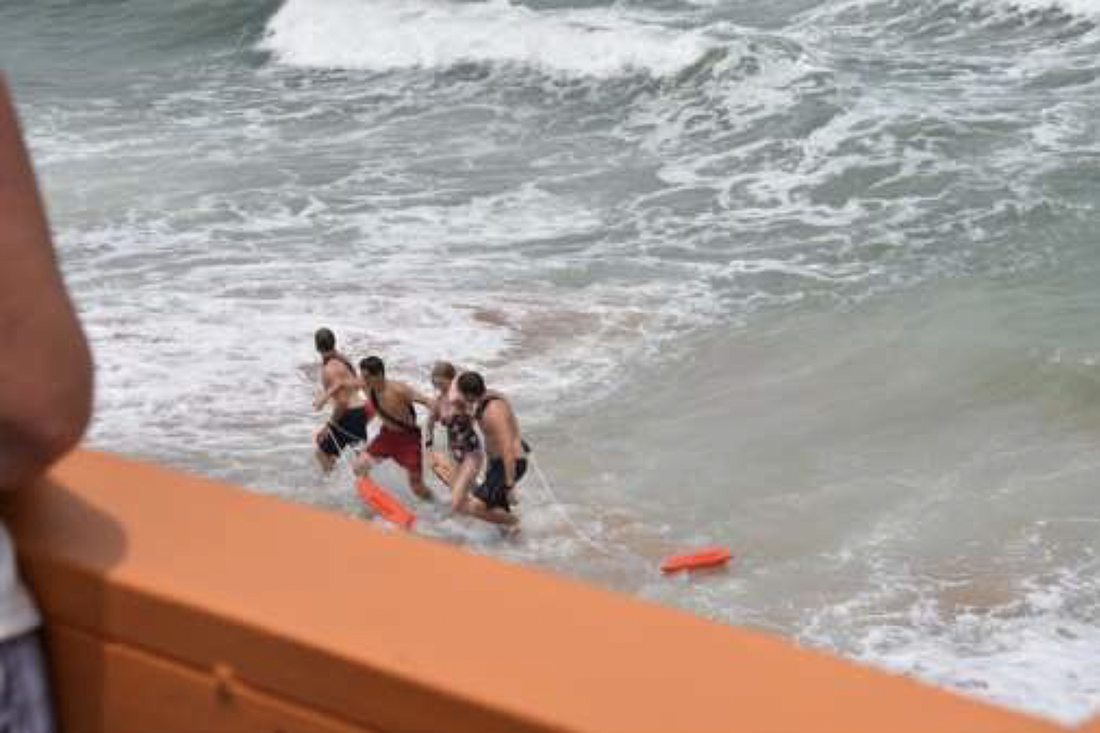- April 18, 2024
-
-
Loading

Loading

Flagler Beach's lifeguards provide beach protection May through September from 9:45 a.m. to 5:15 p.m. — sometimes later, when people stay on the beach in the evening. But the region in which they'll do so will shrink a bit this year.
The lifeguard program will provide coverage only in areas along the boardwalk, eliminating the two lifeguard stands that have been placed north of that region in previous years.
"It’s going to be simpler for the public to understand," City Manager William Whitson said, crediting City Commission Chairman Eric Cooley with the idea, during a Feb. 10 commission meeting. ". ... The guarded beach is boardwalk to boardwalk. That’s not confusing … If you want to come to a guarded beach, this is where we’re going to guard."
The city has also written a letter to the county government seeking more financial support for beach protection, he said.
"The financial burden of picking up the trash, guarding the beaches and handling the police matters and all the other issues that come with the beach — that cost burden is shifting to the local city, and we feel that burden should be shared by the county and possibly even the state," Whitson said. "There are discussions ongoing right now about how to change that formula. But for right now, they’re making a contribution, and the question remains, is that contribution adequate, and does it need to shift and change? And as the manager, I’m going to say that’s an affirmative yes for me."
"The guarded beach is boardwalk to boardwalk. That’s not confusing … If you want to come to a guarded beach, this is where we’re going to guard."
— WILLIAM WHITSON, Flagler Beach city manager
Whitson spoke after the city's recreation director, Tom Gillin, told commission members about city staff's plan for the lifeguard program as the city prepares for more traffic on the beach this summer as COVID-19 becomes less of a concern.
The city's lifeguards made more than 100 rescues last summer — a rescue is any time a lifeguard has to enter the water to help someone — and took more than 1,200 preventive actions, like shifting swimmers and surfers or warning people about dangerous water conditions.
There were 84 rip current rescues and 17 surf rescues last year.
"Most of the time if someone is in distress in the water, it’s because they’re caught in a rip current," Gillin said.
Swimmers shouldn't fight rip currents, which usually don't extent very far. Instead, swim parallel to shore until you're past the current before swimming back to the beach.
"One thing that we noticed, that we expected, is every time our number of preventative actions goes up, our number of rescues goes down," Gillin said. "It means less time that a lifeguard has to go in the water, because they prevented something from happening before it did happen."
The lifeguard program used to visit elementary and middle school to teach children about beach safety, but hasn't been able to do much of that since COVID-19 began. It plans to start again this year, and is also planning a series of videos about aquatic safety. The city's junior lifeguard program — a feeder for the lifeguard program — will also likely resume this May.
"Education, that’s going to be the key to prevention ," Gillin said.
He showed the commission photos of an ocean rescue, taken by a woman who happened to be playing with her new camera on the deck of the Funky Pelican restaurant at the pier when a beachgoer got caught in a rip current and was pulled out by lifeguards.
"That’s a perfect view of what a rip current looks like," Gillin said, displaying one of the woman's photos. "A lot of people get caught in rip currents because they don’t know what a rip current is they don’t know how to avoid it. ... That’s a pretty nasty looking rip current out there, but it’s picture perfect for somebody to see."
This year, there will be six lifeguard towers: three south of the pier, and three north of the pier. That has saved some money, Whitson said.
"It helped save some resources, but again, it’s a better situation for the city because it allows us to communicate where the guarded beach is. … It was a a good-size saving, that we’re going to plowing into other projects and programs."